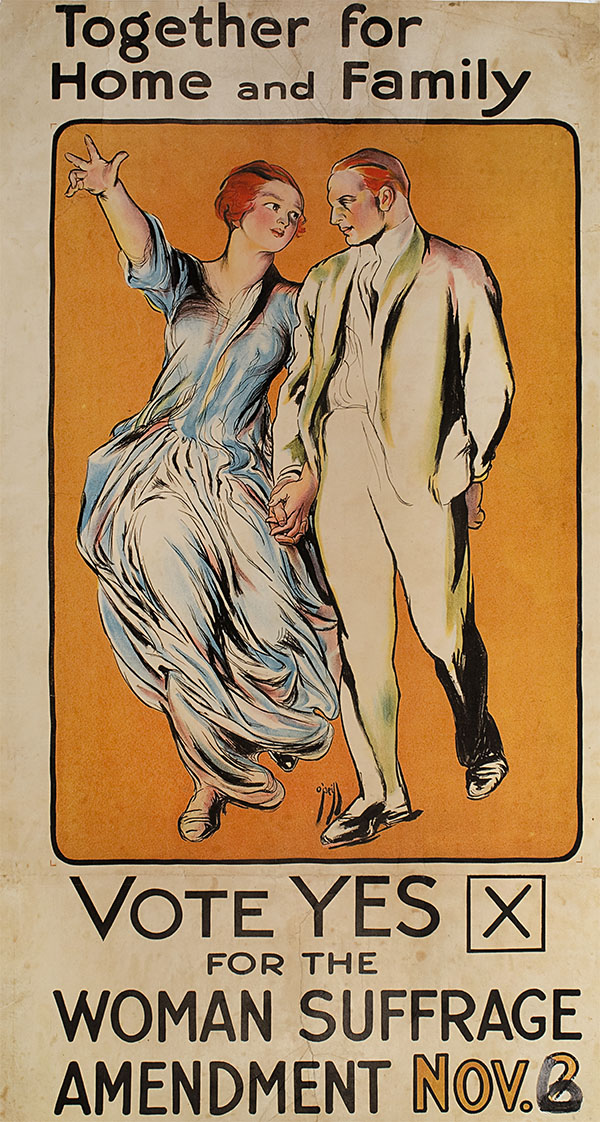Background
The fight for woman suffrage was about more than the right to vote. In arguing for and against suffrage, Americans were trying to define the role of women in society. For over a century, the prevailing belief was that American women were meant to be at home. They took care of their husbands and children and managed the cooking, cleaning, and health of the home. But as the nineteenth century came to a close, more women promoted a new vision of womanhood, one that included the opportunity to pursue life in the public sphere. In this new vision, women could go to college, work as teachers and librarians, join clubs and organizations . . . and vote. This progressive view did not necessarily contradict the traditional view of women. Modern women could pursue independence and take care of home and family.
The concept of new womanhood, however, was one of privilege. The stereotypical image of a young woman who went to college, worked as a professional, participated in clubs, and fought for suffrage was one that was open almost exclusively to middle- and upper-class white women.
About the Image
Rose O’Neill, a Nebraska-born illustrator and writer, created this poster. Suffragists in New York State used it to gather support for a suffrage amendment to the state’s constitution. The date on the poster has been changed from “Nov. 2” to “Nov. 6” because it was used in two different years. A New York woman suffrage bill failed to pass on November 2, 1915. The poster was re-used when the same bill came up for a vote on November 6, 1917. In 1917, the suffrage bill passed, extending the vote to all women in New York State.
Rose O’Neill put more than her belief in suffrage into this poster. She also included her personal fashion tastes. O’Neill rejected the confines of corsets and preferred to wear flowing, Grecian-style gowns and velvet robes when she was working. She presented the woman in this poster in a similar uncorseted outfit.
Vocabulary
- corset: A close-fitting undergarment for women that restricted and shaped the hips, waist, and chest to a specific shape.
- prevailing: Common or leading.
- suffrage: The right of voting; in this era, suffrage often referred specifically to woman suffrage, or the right of women to vote.
Discussion Questions
- To what extent does this poster present a vision of new womanhood? To what extent does it promote traditional assumptions about women at home?
- Not all suffragists believed married women belonged at home, but they repeatedly promoted this vision in their materials. Why might they have done this?
- Who is the audience for this poster and why does that matter?
- This poster was used twice, once in 1915 and again in 1917. What does this tell us about the fight for suffrage and the experiences of suffragists?
Suggested Activities
- Dive deep into pro-suffrage arguments. Analyze this poster in tandem with the document “Women in the Home” and Adella Hunt Logan’s article “Colored Women as Voters.”
- Read an anti-suffragist perspective in “Ballot not a Panacea for Existing Evils,” and discuss how anti-suffragists might have interpreted this poster.
- Compare the woman’s outfit in the poster with the three recreational outfits. How did Rose O’Neill’s vision of liberating fashion differ from the corseted cycling, golfing, and exercising outfits?
Themes
AMERICAN IDENTITY AND CITIZENSHIP; ACTIVISM AND SOCIAL CHANGE; DOMESTICITY AND FAMILY







